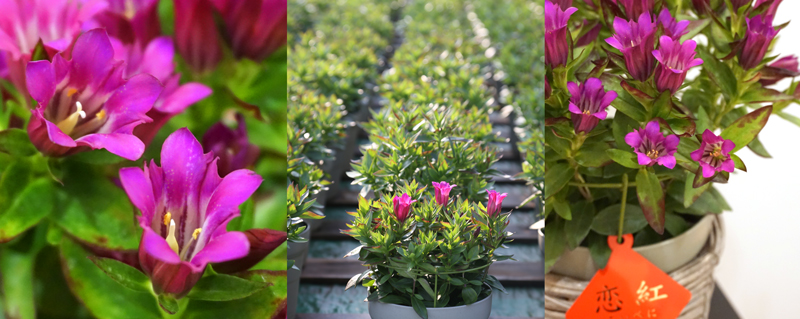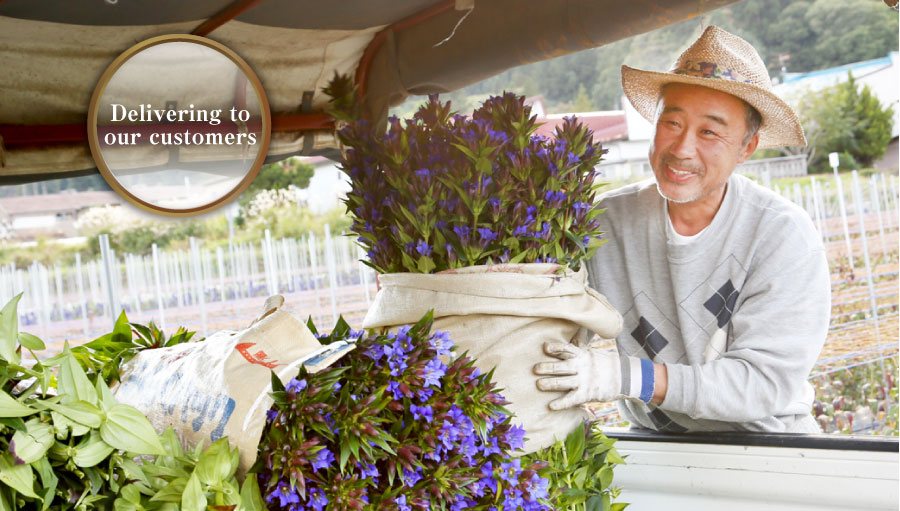The Ashiro Rindo became No. 1 in Japan thanks to the creativity and tireless efforts of the growers. These passionate and proactive initiatives are bringing about innovation in the flower industry by continuously understanding current needs while also grasping future needs.
workRindo cultivation begins with seen sapling in June, followed by heavy watering once the saplings firmly take to the ground. Saplings are cultivated with care to prevent disease and insect damage. From the 2nd year, the saplings are given additional fertilizer and culled to encourage growth. Flowers are harvest from in July of the 2nd year, after which shipping begins. Toprevent the spread of viruses, blades are not used during culling and harvesting. All work is done by hand. During culling to provide better air exposure, the outdoor cultivation provides seasonal elements that help shape the flowers.
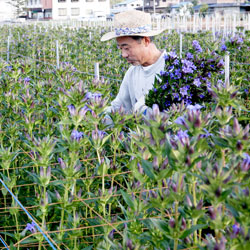
【1】Flowers produced outside are picked and harvested by hand, one by one.
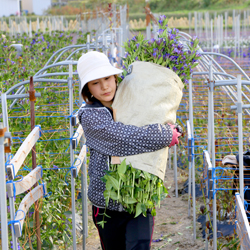
【2】Autumn is the main flower harvest season. Rindo are strong against summer heat and are harvested between July and October.
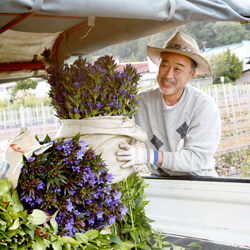
【3】Harvested flowers are bunched together and transported to the shipping center.

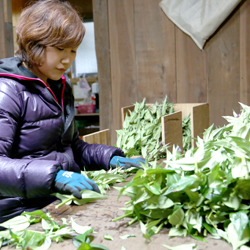
【1】Flowers are separated based on their bloom and length.
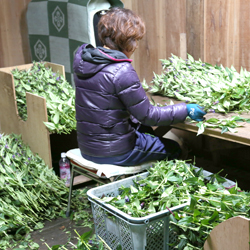
【2】 Strict checks are used to confirm the quality of the flower.
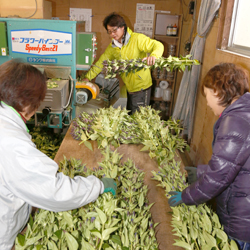
【3】Final adjustments for each shipping standard.

【4】A michine is used to bunch flowers in batches of 10 each.
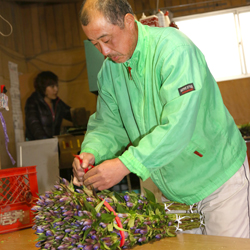
【5】Flowers are bunched by grade and watered.
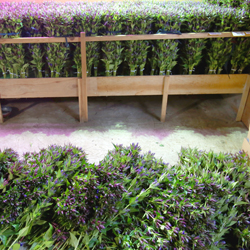
【6】Water is done to preserve the status before flowers are boxed and loaded onto a truck for shipment to the market.
At the Hachimantai City Flower Research Development Center, work is done toward improving and researching original breeds and developing new breeds.
In the test fields, planned cultivation of test seeds is conducted with 400-500 different breed improvements being tested each year. 1-2 new breeds each year are selected as a new breed for cultivation.Some 10 years of hard work gone into the development of a single new breed. The growers and researchers, everyone involved with the Ashiro Rindo work together toward the goal of establishing the Ashiro Rindo brand.
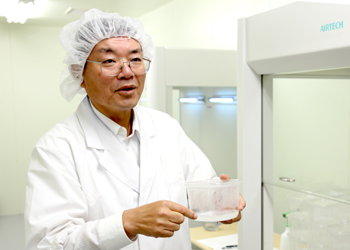
Director: Takashi Hikage (Ph. D. in agriculture)

Chief engineer: Mitsuru Endo
After much labor and time, saplings that clear various conditions become high-quality new breeds that can be planted in the farms of the growers.
During breed improvement and creation, a brush is used to manually for pollination.

Cultivation house where seeds are cultivated into saplings.
This high altitude region can receive over 1m of snow. The rindo are cultivated outside a greenhouse but have the strength to survive in such conditions. In February, saplings that have survived the winter spring from beneath the snow.
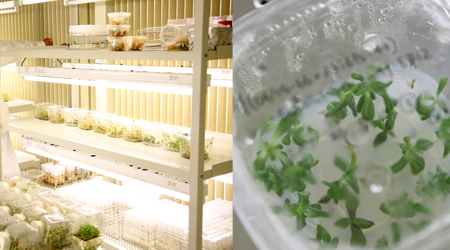
In the clean cultivation room, saplings are cultivated with kanten (agar gelatin) instead of dirt.
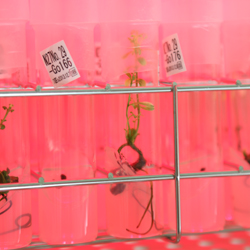
A red LED light is used to stimulate growth using the red wavelength.
In the clean cultivation room, saplings are cultivated with kanten (agar gelatin) instead of dirt. Turning the test tube eliminates the distinction within the plant between top and bottom, which causes the seed to expand. Covering with a cup creates conditions identical to the test room and a red LED light is used to stimulate growth using the red wavelength.

Test field for outdoor cultivation. Here, the quality and cultivation conditions of new breeds are tested.

Pollination is conducted by hand using a brush.

In February, the facility is filled with snow to create a stable environment that is used to ensure the year-round stable cold-weather cultivation of the Ashiro Rindo. Cooled using melted snow.

The Ashiro Rindo is used as the lobby flower for a 5 star hotel in Singapore.
FB:Toyoake Kaki Co.,Ltd Picture offer
Ashiro Rindo used for decoration around the world.
Overseas, this flower is known as the Gentiata. Like the blue of St. Mary, the beauty of the blue rindo flower has a spiritual effect that leaves an impression on the hearts of people. In Holland other parts of Europe,a short rindo is most common so the Ashiro Rindo with its long stem and strong flowers is viewed as a high grade flower that is popular in luxury flower shops and for use as hotel decorations.

ReferenceL Japan Plant Export Council
We began exporting to Europe in 2002.
All produced brands are originals. As such, in order to protect the breeds as developed and cultivated in Hachimantai City, we conduct trademark registration in Japan as well as in the EU, America, and Asia.
Export countries: Holland, America, Singapore, Hong Kong, Dhubai. Moscow, etc.
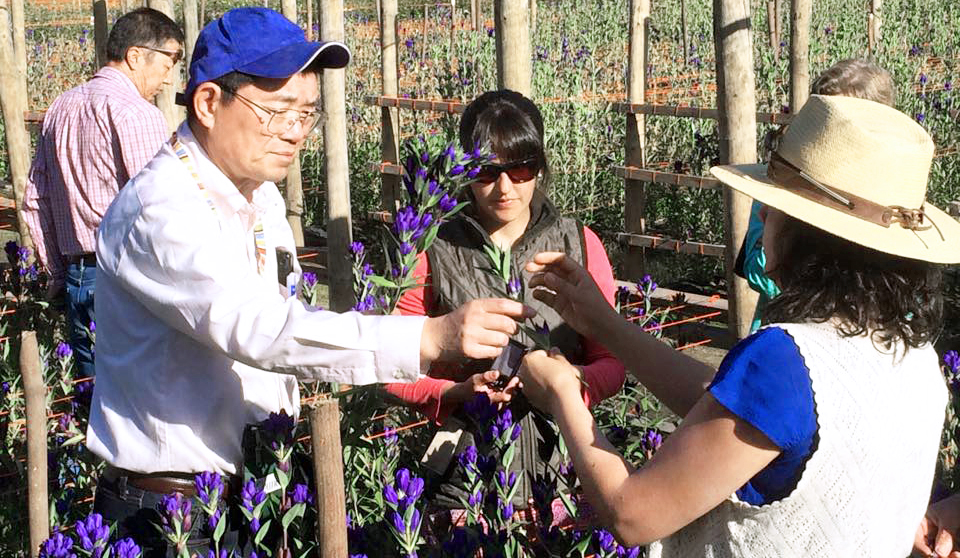
Conducting information exchanges with overseas growers to further relationships.
Tour of overseas rindo farm
In Japan, the shipping period for rindo is limited. As such, we work with New Zealand and Chile to create a year-round shipping system and conduct joint breed development.To strengthen the relationships with both partner countries, we conduct regular information exchanges and tours.Photo' January 2015 Tour to New Zealand and Chile. Tour of farms that grow original breeds of the Ashiro Rindo.
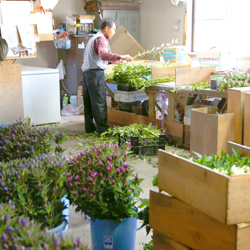
【1】Flowers are separated based on export shipping standards.

【2】Technology is required for packaging, etc. to make it air distribution possible.
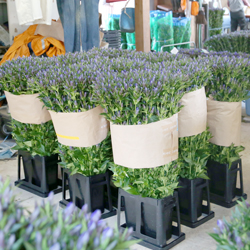
【3】Technology is required for packaging, etc. to make it air distribution possible.
Development that took 10 years,
a new breed of potted plant, the Ashiro Rindo "Koibeni"
First shipped in winter 2014. The combination is based on Japanese pink from the father and New Zealand red from the mother. The blessing born from collaboration research by both companies.Shipping beginning in December, this is a true Christmas color with a contrast of red petals and green leaves. The birth of a rindo for enjoyment during the winter.
